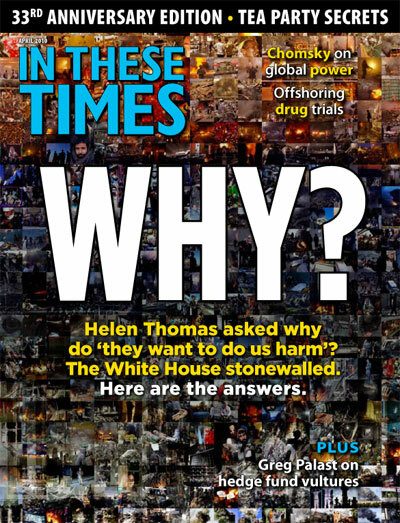Global Warming Out in the Cold
Controversies and weird weather damage climate science’s credibility.
Theo Anderson

There’s no denying it: the past winter was a bleak, brutal season for climate scientists and global-warming activists. The most obvious change, climate-wise, was in the realm of public opinion, which cooled considerably to the idea that human activity is warming the earth.
Storm clouds began forming late last fall, with the leak of a series of email exchanges between several influential climate scientists. The messages, which were located on a computer server at a British university and stolen by a hacker, seemed to suggest that scientists had massaged their data to exaggerate the rise in global temperatures. The British government will soon release a report on the affair.
In January and February, the storm gained strength with the revelation of factual errors in the 2007 report by the United Nations’ Intergovernmental Panel on Climate Change. That report had won a Nobel Prize and seemed to put to rest any doubts about the reality of global warming.
But these controversies were pale abstractions compared with the weather – which, for much of the United States, involved punishing snowstorms. No matter that North America represents less than five percent of the earth’s surface, or that global-warming theory predicts increased precipitation as ocean water evaporates, or that this year’s storms along the Eastern Seaboard are likely due to a change in weather patterns caused by the dramatic warming of Greenland. It’s hard to accept that things are heating up when one is digging out, as the Virginia Republican Party mockingly put it, from “twelve inches of global warming.”
In the court of public opinion, the controversies and the weird weather inflicted serious damage on the credibility of climate science. A Gallup poll in mid-March showed that a record number of Americans – 41 percent – now think that the threat of global warming is exaggerated. Twenty-eight percent say the threat is underestimated. Those numbers are nearly the reverse of responses to the same question in 2006, when 30 percent said the threat of global warming was exaggerated and 38 percent believed it was underestimated.
But now that the season of renewal is here, what are some hopeful signs – “green shoots,” if you will – that might cheer the climate-change believer’s heart?
One is a presentation at a recent conference organized by TED, a self-described “small nonprofit devoted to ideas worth spreading.” The speaker was Bill Gates, undoubtedly a rainmaker in the worlds of business, technology and philanthropy, no matter what one thinks of Microsoft.
Gates didn’t debate the science of global warming, and he didn’t focus on looming catastrophes. Instead he talked about solutions. “We need energy miracles,” he said. The world needs to produce zero carbon emissions by 2050, according to Gates, phasing out the use of coal and natural gas. The world’s new energy portfolio, he said, would consist of nuclear, wind and solar power, in addition to new solutions that emerge in a period of intense, focused, well-funded research that must begin right now.
Another green shoot is the recent work of psychologist Daniel Goleman, who lays out the case for a revolution in the way we live and think. The key, he writes in Ecological Intelligence (2009), is that humans must learn a skill that hasn’t naturally evolved: that of taking into account the interconnected reality of humans and nature, and calculating the effects of our behavior on this “hidden web of connections.”
Many authors have made this case before, one way or another. But Goleman isn’t just another author. He put the notion of “emotional intelligence” into wide circulation in the 1990s, with a book by that title, and he has a knack for popularizing ideas and injecting them into the cultural mainstream.
The literal and figurative storms that damaged climate science so badly this winter have receded – for now. But like the seasons, they are sure to return. Whether these budding signs of change will be strong enough to survive the coming storms remains an open, crucial question.









